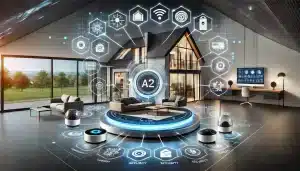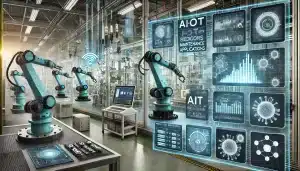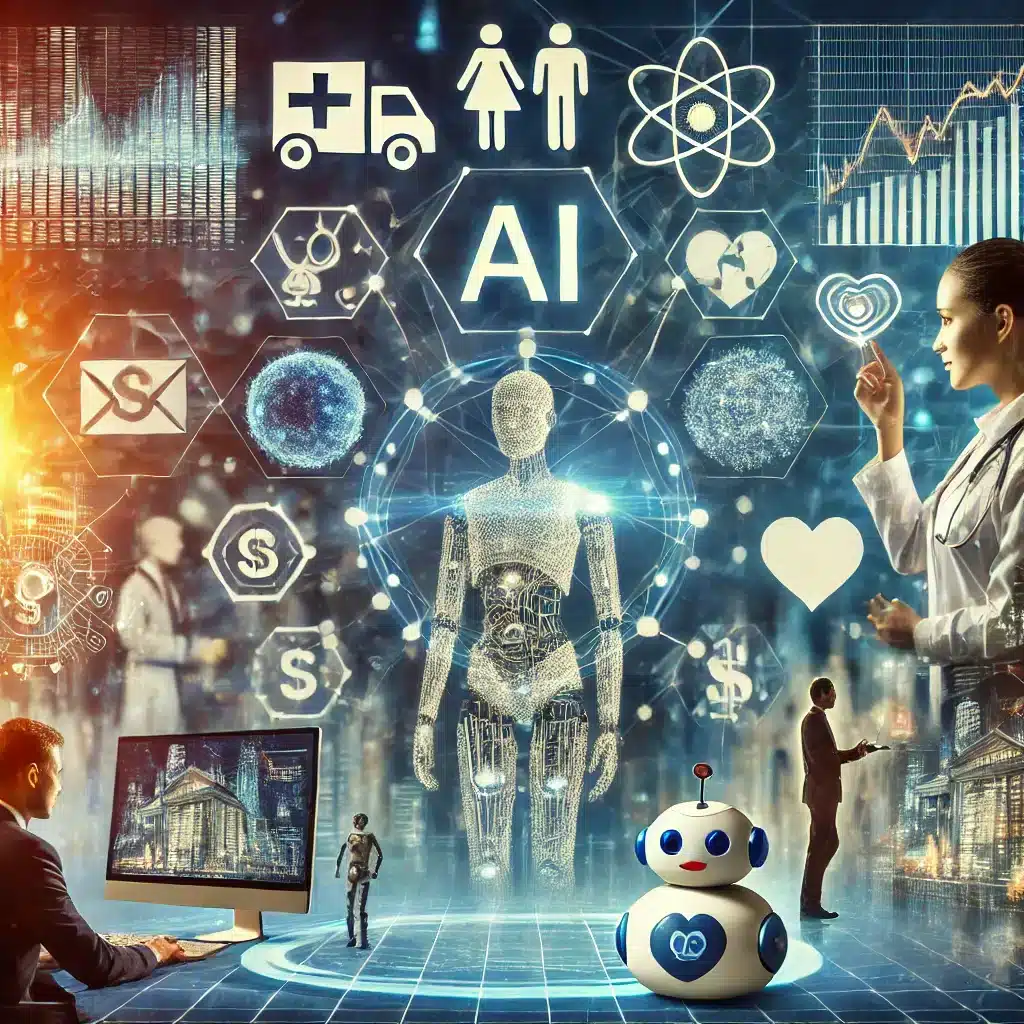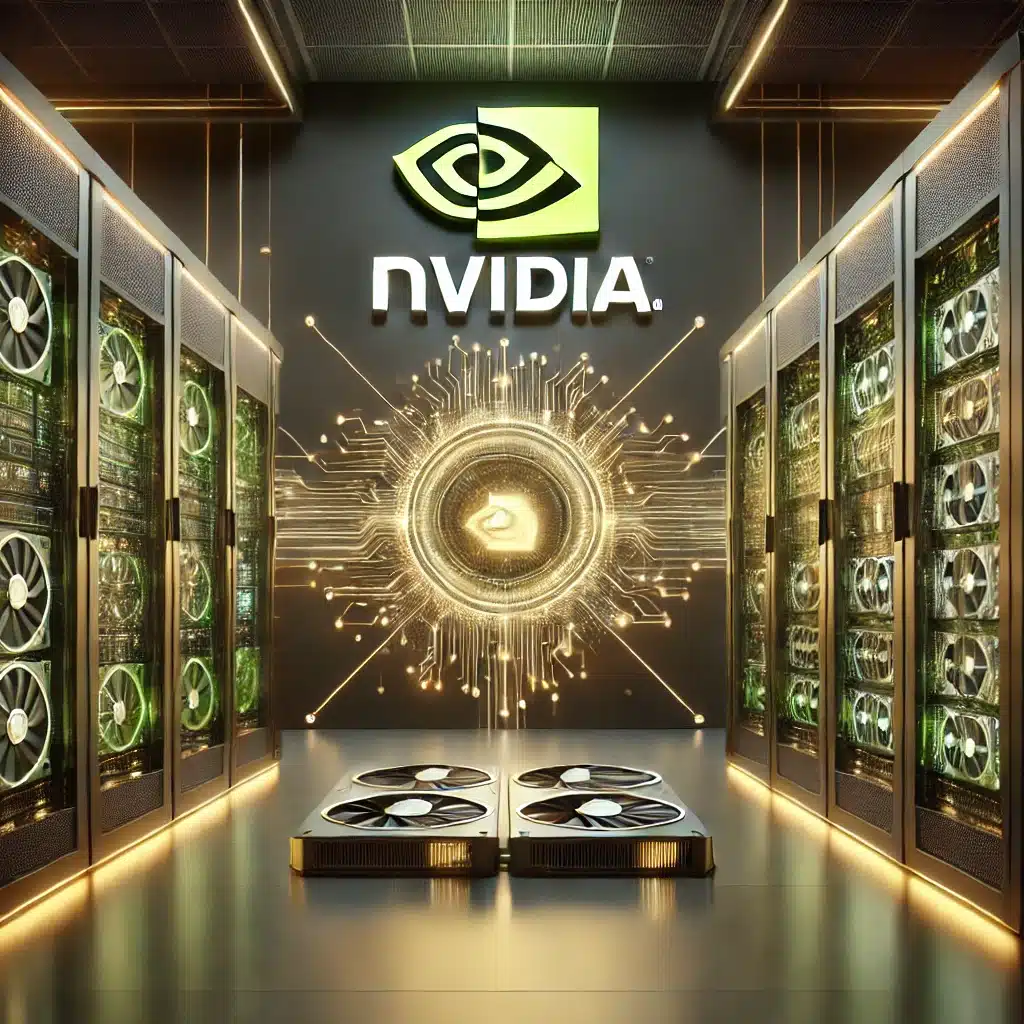In recent years, the amalgamation of artificial intelligence (AI) and the Internet of Things (IoT) has fostered a new era of technology, creating more intelligent and interconnected devices. The combination of these both—sometimes referred to as the Artificial Intelligence of Things (AIoT)—plays a significant role in transforming everyday devices into smart devices that can learn, adapt, and respond in real-time. This integration involves different layers of technology, including data collection, data analysis, and machine-to-machine communication, which, combined with AI algorithms, enable unprecedented levels of automation and intelligence in various applications.
How is AI Used in IoT to Enhance Smart Devices?
What role does artificial intelligence play in IoT systems?
Artificial intelligence serves as the brain for IoT systems, enabling the processing of vast amounts of data generated by sensors and devices. AI in IoT enhances the capabilities of smart devices by allowing them to make autonomous decisions, identify patterns, and predict future events. Without AI, IoT systems would merely consist of interconnected devices without the capacity to truly interpret the data they collect. AI algorithms can analyze this data and draw meaningful insights, turning raw data into actionable information. These capabilities are crucial for applications such as predictive maintenance, smart energy management, and more.
How do AI algorithms process data from IoT sensors?
AI algorithms play a central role in processing data from IoT sensors. These algorithms can filter, categorize, and analyze sensor data with incredible speed and precision. Machine learning models, a form of AI, learn from the data collected and can detect anomalies, recognize patterns, and even forecast trends. By continuously learning from the data, these algorithms can provide insights that help in optimizing the performance of IoT devices. The processing involves steps such as data cleaning, feature extraction, and model training, ensuring that the insights generated are both accurate and useful.
What are some key applications of AI in IoT devices?
The application of AI in IoT devices spans numerous industries and use cases. One prominent application is in the smart home ecosystem, where AI-powered IoT devices like thermostats, lighting systems, and security cameras can learn user preferences and automate routines for enhanced comfort and security. In healthcare, AIoT is utilized in wearable devices that monitor vital signs and provide real-time health analytics. Industrial IoT employs AI for predictive maintenance, reducing downtime by predicting equipment failures before they occur. These examples demonstrate the immense potential of combining AI with IoT to create smarter, more efficient systems.

What is the Importance of Data Analysis in AI and IoT Systems?
How is data collected from IoT devices analyzed by AI?
Data collected from IoT devices is the lifeblood of AIoT systems. The initial step in the analysis involves data collection through diverse IoT sensors, which may measure anything from temperature and humidity to motion and acceleration. Once the data is collected, it undergoes preprocessing to clean and structure it for further analysis. AI and machine learning algorithms are then applied to this structured data to identify trends, detect anomalies, and make predictions. The output from this analysis is used to drive decision-making processes and optimize system performance in real-time.
What are the benefits of using real-time data for AIoT?
- Immediate responses to changes in conditions: Data coming in real-time allows for dynamic and responsive systems to make quick responses to their surrounding environment.
- Smart Traffic Management: Real-time data assists in changing traffic light sequences for the reduction of jams caused by prevailing road conditions.
- Production: Real-time data allows production lines to adjust instantly, improving efficiency and ensuring the production of quality products.
- Improved Experiences: Timely decisions involving real-time data lead to improvements in interactions and outcomes on behalf of users.
- Operations effectiveness: Real-time data, in turn, results in a smooth and efficient process and operation in various industries.
- Improved safety: Quick decisions or judgments in crucial situations that enhance safety in several business sectors.
How does machine learning contribute to data analysis in IoT?
Machine learning, a subset of AI, significantly enhances data analysis in IoT by enabling systems to learn from experience. It can handle vast amounts of data and discern intricate patterns that human analysts might miss. Machine learning models are trained on historical data to predict future events, such as equipment failures in industrial settings or energy consumption patterns in smart grids. This continuous learning process ensures that the models improve over time, providing increasingly accurate insights. Machine learning’s ability to automate complex data analysis tasks makes it indispensable for managing the data deluge from IoT sensors.
How Do AI and IoT Work Together to Improve Connectivity?
What is the impact of AI on IoT connectivity?
- Network optimization: AI decreases latency and makes the communication between IoT devices reliable.
- Better interoperability: AI ensures that different IoT ecosystems can communicate in an interference-free manner, thereby becoming compatible with each other.
- Smart traffic management: AI-based management focuses on critical data while performing tasks with high performance, reliability, and efficiency in the network.
- Support for real-time applications: AI-driven enhanced connectivity is required for any applications where immediate data processing action is necessary.
- Efficiency of large IoT networks: Large-scale deployment of IoT would always keep large networks efficient, reliable, and manageable with AI.
How does integrating AI with IoT enhance device connectivity?
Integrating both enhances device connectivity by enabling smart data routing, adaptive bandwidth management, and predictive maintenance of network infrastructure. AI algorithms can predict network congestion and dynamically redistribute data loads to maintain optimal performance. This results in more stable and efficient communication between IoT devices. Additionally, AI can support the self-healing of networks by identifying and resolving connectivity issues autonomously. This proactive approach ensures that IoT networks remain robust, minimizing downtime and maintenance costs.
Can you provide examples of AI-enabled IoT applications?
AI-enabled IoT applications are becoming increasingly prevalent in various sectors. For instance, in agriculture, AIoT systems use sensor data to monitor soil conditions, weather, and crop health, optimizing irrigation and fertilization processes. In smart cities, AI-driven IoT applications manage energy usage, waste collection, and city traffic, improving urban living conditions. In the healthcare sector, AIoT applications include remote monitoring of patients using wearable devices that provide continuous health updates to healthcare providers. These examples highlight the transformative potential of combining AI with IoT to create smarter, more efficient solutions across different industries.
What are the Potential Challenges of Combining AI and IoT?
What challenges arise with the vast amounts of data in AIoT?
The vast amounts of data generated by IoT devices pose significant challenges for AIoT systems. Handling and processing such a large volume of data requires robust infrastructure and significant computational resources. There is also the issue of data quality, as inaccurate or incomplete data can lead to erroneous insights and decisions. Data storage and management become critical, demanding sophisticated data architectures to ensure data integrity and accessibility. Ensuring that AI models are regularly updated and retrained with relevant data is another ongoing challenge that requires considerable effort and resources.
How do security and privacy issues affect AI and IoT integration?
Security and privacy are major concerns in the integration of AI and IoT. The vast interconnectivity and data exchange inherent in IoT networks makes them susceptible to various cyber threats. AI algorithms, while powerful, can also be exploited if not adequately secured, leading to potential breaches of sensitive data. Privacy issues arise from the collection and processing of personal information by AIoT systems, necessitating strict data governance and compliance with regulations such as GDPR. Implementing robust encryption, access control, and continuous monitoring are essential measures to safeguard against security vulnerabilities.
What measures can be taken to ensure the reliability of AI-powered IoT systems?
To ensure the reliability of AI-powered IoT systems, several measures need to be implemented. First, comprehensive testing and validation of AI models and IoT devices are crucial before deployment. Ongoing monitoring and maintenance of these systems help identify and rectify any issues promptly. Implementing redundancy and failover mechanisms can minimize the impact of any system failures, ensuring continuous operation. Additionally, adopting best practices for data security, such as encryption and access management, can prevent unauthorized access and data breaches. Regularly updating software and hardware components also ensures that the system remains resilient against emerging threats.

What is the Future of AI and IoT in Developing Smart and Connected Devices?
What advancements can be expected in the integration of AI and IoT?
This integration is expected to see significant advancements in the coming years. Enhanced AI algorithms will provide even greater accuracy and efficiency in data analysis, driving more sophisticated IoT applications. The advent of 5G technology will offer faster and more reliable connectivity, facilitating real-time data processing and communication between IoT devices. Advances in edge computing will allow more data processing to occur closer to the source, reducing latency and bandwidth usage. These technological progressions will enable more seamless and advanced AIoT solutions, propelling forward the development of smart and connected devices.
How will AIoT shape the future of smart home technologies?
AIoT is poised to revolutionize smart home technologies, making them more intuitive, efficient, and user-friendly. Future smart homes will feature highly integrated systems where devices communicate seamlessly, creating a harmonious living environment. AI can learn from user interactions to automate routine tasks, such as adjusting lighting, managing energy consumption, and enhancing security features. Voice assistants integrated with AIoT systems will become more sophisticated, offering personalized and context-aware assistance. These advancements will not only improve convenience and comfort but also contribute to energy savings and enhanced quality of life.
What are the emerging trends in the artificial intelligence of things?
Several emerging trends are shaping the artificial intelligence of things. One notable trend is the rise of edge AI, where AI processing is done at the edge of the network, closer to where data is generated. This approach reduces latency and bandwidth issues, making real-time data analysis more efficient. Another trend is the increasing use of AI for predictive maintenance in industrial settings, where IoT sensors and AI algorithms work together to foresee equipment failures and schedule proactive maintenance. Additionally, advancements in natural language processing (NLP) are enabling more intuitive human-machine interactions, further expanding the possibilities for AIoT applications across various domains.
Conclusion
A new era of intelligent, networked gadgets is being ushered in by the combination of artificial intelligence (AI) and the Internet of Things (IoT). In addition to gathering and processing data, AI-powered IoT solutions enable devices to make intelligent decisions on their own, increasing automation and efficiency across a range of industries. From building smarter houses to streamlining manufacturing, personalizing healthcare, and revolutionizing urban living, this collaboration has far-reaching effects. The possibilities of AIoT are endless, opening the door for even more creative future applications and solutions as long as AI, machine learning, and connectivity continue to progress.
FAQs
1. How does AI improve IoT devices?
AI enhances IoT devices by enabling them to analyze data, recognize patterns, make autonomous decisions, and predict future trends. This results in smarter, adaptive, and automated systems.
2. What are the challenges of integrating AI with IoT?
Key issues involved are data management in massive proportions, ensuring security and privacy of data, maintaining connectivity, and addressing real-time processing.
3. How does AI support data analysis in IoT?
AI processes data gathered from IoT sensors by filtering, categorizing, and analyzing it. Machine learning models identify trends and predict future events and improve the overall performance and decision-making of IoT systems.



